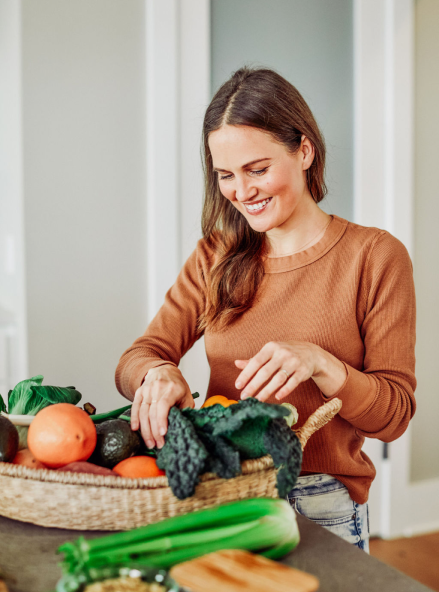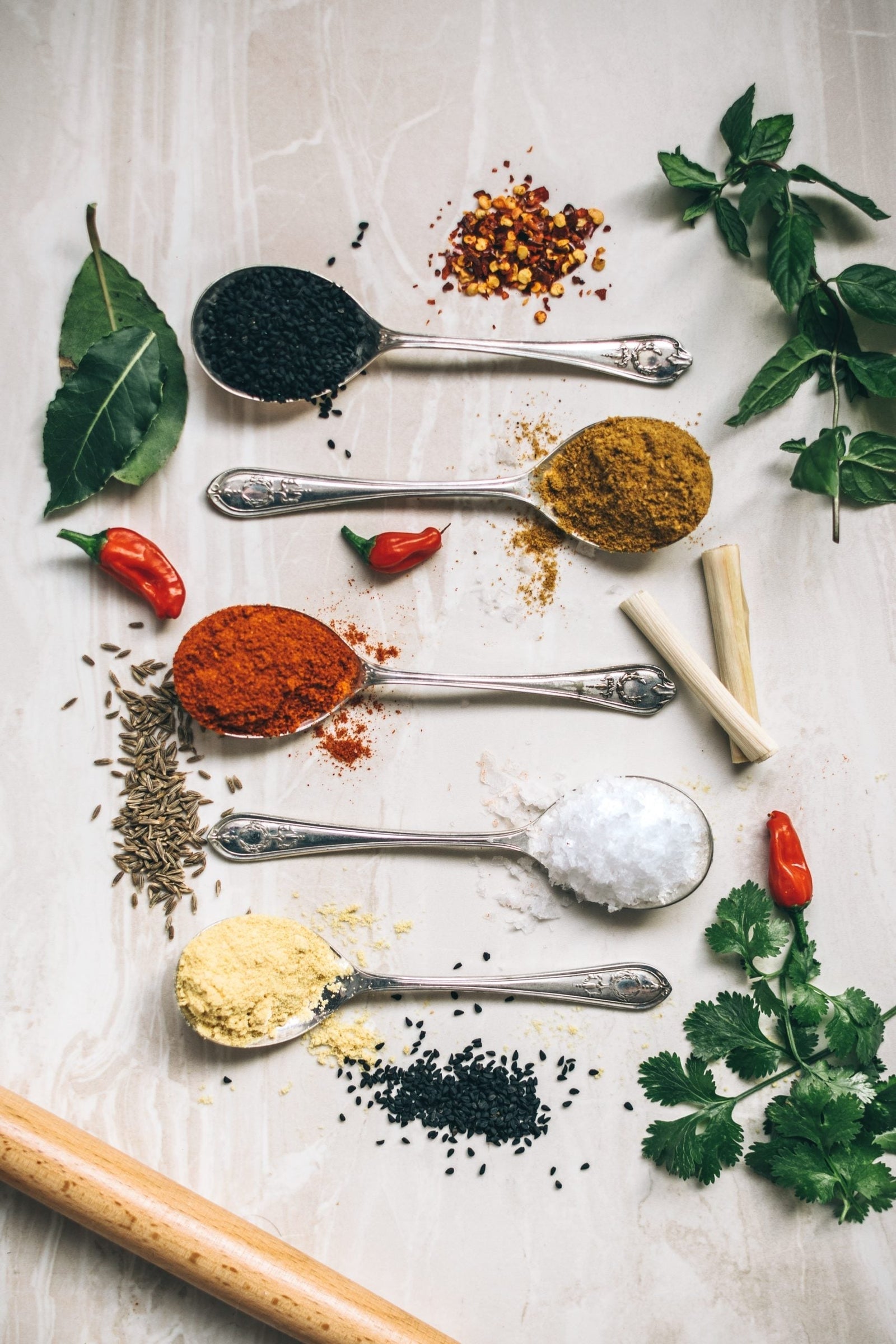How Cooking Methods Impact Nutrients & How To Cook For Optimal Nutrition

Whole, natural, unprocessed foods have many different nutritional values and health benefits. They come in all shapes, sizes, flavors, colors, and textures. Food variety is what keeps eating fun! It’s truly best for our bodies to get it all - through a diversity of flavor, food processing, and cooking methods. Familiarizing yourself with different ways to process and cook foods can transform your kitchen game, widen your range of tastes, and even boost (or lessen) the nutritional value of foods, depending on the method you use.
For a varied and balanced diet, you want to use a combination of different cooking approaches suited to the seasons, activity level, and needs of those you are cooking for. It is not just what you eat but also how you prepare it that can enhance your eating experience. In this article, we’ll talk about different cooking methods, what each method is best (and tastiest!) for, and which ways might not be so beneficial to your health.
RAW FOOD
Raw food is just as it sounds: in the raw, as nature provides! Raw fruits and vegetables are convenient and only require a quick wash! They are cooling to the body and are especially enjoyed in the summer for their texture as raw fruits and vegetables pack a memorable crunch. Year-round, use raw salads to add a beautiful colorful balance to more complex or heavier meals.
For keeping vitamins and minerals intact, eating fruits and vegetables raw is one of the best options because they haven’t been exposed to any heat where nutrients have the potential to be broken down or lost. Raw foods like kiwi, onion, garlic, pineapple, and papaya contain enzymes that boost digestion.
Although raw foods are often marketed as the healthiest way to eat, they may not be for everyone. If someone is prone to digestive distress, the fiber in raw foods can be hard to digest and cause cramping, bloating, and indigestion. Similarly, raw plant foods may contain compounds like lectins and phytates that can irritate sensitive digestive tracts. However, raw foods can be made more digestible without cooking! Sprouted foods are a predigested power-packed regenerative super food. Soaking nuts and seeds overnight makes them more digestible, eliminates antinutrients, and enhances nutrient bioavailability. Soaking raw oats overnight creates a digestible raw breakfast that is a resistant starch ready to eat when you get up!
Note: Raw fruits and vegetables and meats and seafood enjoyed on the raw or rarer side can all come with parasites and bacteria. For this reason, it’s best to thoroughly wash raw produce and cook all seafood, meat, and poultry to their recommended minimum temperatures.
FERMENTING
Some of the first ‘processed’ foods came from fermentation, like yogurt, wine, beer, sauerkraut, and kimchi. This “cooking” method is instead a preservation method that is a great way to save foods like fruit and vegetables from an abundant garden harvest that are going to spoil. Fermented foods are relatively shelf-stable, making them convenient and reliable. Fermenting is an exciting cooking method as it transforms foods into nutritional powerhouses!
Fermented foods are incredibly nourishing, and the process preserves and transforms vitamins and other nutrients. Bacteria like Lactobacillus within fermented foods can synthesize vitamins and minerals and produce anti-inflammatory short-chain fatty acids, peptides, and enzymes that help break down food and protect the gut. These bacteria, or “probiotics,” have the added benefit of boosting gut health and balancing the microbiome as natural antimicrobials. Fermented foods can disengage substances like lectins and phytates, making nutrients more bioavailable and breaking down tough-to-digest substances like gluten. Their enzymatic properties make them anti-allergenic and providers of antioxidants.
If you’re someone who is dealing with small intestinal bacterial overgrowth (SIBO), candida, mold exposure, or histamine intolerance, fermented foods might be hard to tolerate. When you have recovered, you can introduce fermented foods into your diet!
STEAMING
Steaming is a popular cooking method that is quick, uses minimal water, and retains nutrients. Steaming leaves crunch and flavor but softens vegetable fibers making them more digestible. Springtime is a great time for adding steamed vegetables, especially green ones, for those who desire to detoxify.
Aside from keeping your veggies tasty, steaming is one of the healthiest cooking methods. Because it is not high heat, steaming leaves delicate nutrients like folate, vitamin C, and antioxidants intact. Just don’t steam vegetables for too long that they become limp and soggy!
BOILING
Boiling is a go-to cooking method because it’s so easy and requires minimal effort. However, it’s not the most ideal if you’re looking to get your nutrients in! The water or liquid tends to pull the vitamins and minerals out of your food. If you’re keen on boiling, drink the broth or save it for a soup or stew. This way, the nutrients pulled into the liquid are still consumed and not lost.
On another note, over boiling and the heat of boiling water is also known to destroy vitamins and nutrients like antioxidants. For those vegetables you’ve always boiled, steam or sauté them. Try pressure-cooking grains, legumes, and beans that you typically boil to increase digestion and nutrient availability.
BRAISING
Braising is like steaming, except the meat and/or vegetables are partially submerged in a small amount of liquid like broth, stock, or water. The food is first often browned in oil, then a liquid is added, and brought to a simmer. Once at a simmer, herbs, spices, and other seasonings are added for flavor and then the dish is covered. Braising is relatively healthful (unless overcooked) because it predominantly relies on moist-low heat techniques, which are gentle.
Braised foods fill the house with a welcoming delicious aroma. Long slow cooking promotes whatever meat you’re preparing to get nice, tender, and juicy while cooking evenly. The braising liquid contains many nutrients because they are drawn into the broth during the cooking process. For best health results, reduce the fat during or after braising. If cooked in advanced and cooled, all visible fat can be removed and then reheated. Enjoy ‘au jus’ (with its own natural juices) or try adding some broth, stock, or juice to your meal on vegetables, meat, or starches (like potatoes).
SAUTEING OR STIR-FRYING
Sautéing or stir-frying is a hands-on cooking method that is delicious and efficient. It is performed by heating a small amount of oil or liquid over a low flame to cook seafood/meat and/or vegetables quickly. The oil helps to lock in the nutrients and helps to absorb fat-soluble vitamins (this is applicable for all cooking methods). In fact, compared to roasting, steaming, and boiling, sauteing, for some foods, has the lowest loss of antioxidant activity.
Like our other cooking methods, there is a “healthy” way to sauté and stir-fry. For best results, perform with a heat-sensible, low-toxin pan - see Our Take On Safe, Non-Toxic Cookware. Be sure the fat or oil you use is suitable for heating, like perilla oil, olive oil, ghee, coconut, or avocado oil. Avoid refined inflammatory oils, or omega-3 fatty acids as these oils oxidize when heated and make a healthy dish not so healthy! Cooking your food too long can result in lost nutrients, so avoid this as much as possible. Many dishes call for cutting vegetables into small pieces; therefore, quick cooking is vital to prevent nutrient loss.
PRESSURE COOKING
Pressure cooking is easy and fast and about the only cooking method where it’s perfectly acceptable to throw everything in your pot and walk away! Benefits of pressure-cooking include one-pot cleanup and complete meals ready in minutes. Food is cooked at lower temperatures than most other cooking methods. Couple that with a shorter cooking time, and nutrients are preserved!
Pressure cooking increases the bioavailability of minerals and enhances the digestibility of grains, beans, legumes, and macronutrients (protein, fiber, and starch). Lectins are destroyed that can hinder digestion, inflame the GI tract, and activate the immune system. Additionally, pressure cooking does not create unhealthy chemicals associated with high heat deep-frying, roasting, and grilling.
While pressure cooking seems like the perfect cooking method, there are a few drawbacks if it’s done incorrectly. Make sure you don't fill the pot over the designated height and use just enough liquid to cook your food. Overcooking can alter nutrients like protein, use the shortest cooking time recommended. Make sure your pot is stainless-steel — not non-stick! Otherwise, you’re prone to leaching toxins into your food.
Instant Pots are incredibly versatile pressure cookers. People love them so much that the main point of this article bears repeating. Change up your cooking methods to increase variety in your diet! Don’t pressure cook everything all the time (which is what some people start doing when they get an Instant Pot)! But know that when in a crunch, your pressure cooker can get your meal on the table in record time!
BAKING AND ROASTING
As far as convenience, taste, and health benefits go, baking and roasting rank high on the list as long as high temperatures and overcooking are avoided. Ovens accommodate the creation of some amazing warming comfort foods like cakes, breads, rolls, or anything from batters and doughs! Meats, fish, poultry, vegetables, fruit, grains, and even nuts provide us unlimited baking opportunities!!
Baking and roasting use dry heat cooking, where moisture in food is excreted as steam. This minimizes the amount of oxidation (damage) that the food undergoes, which can harm nutrients. Roasted items are usually coated first in oil to help the exterior brown. In contrast to boiling and braising, baking allows delicate nutrients like vitamins B and C to be retained unless the food is overcooked. Fat-soluble vitamins like A, D, E, and K that would usually leech into cooking oils are also preserved.
Be aware that high temperatures and too long cooking can result in heterocyclic amines (HCAs), advanced glycation end products (AGEs), and acrylamide formation especially in starchy foods. Done right, many baked foods are considered comfort foods and studies have shown that baking and roasting can increase beneficial compounds, like the calming neurotransmitter GABA!
GRILLING
Grilling is a favorite in almost every culture, and it’s not a wonder why! You can grill almost anything, and grilling locks in the flavor and juiciness on the inside while keeping the outside crunchy and crispy. Grilling is fast, convenient, and flavorful, and it’s easy if you’re preparing for many people or want to make food in advance for yourself. While grilling tastes fantastic, it might not be so amazing for your health if it’s done incorrectly. And yes, there’s a healthier way to grill!
For starters, the process of grilling can produce some less-than-favorable substances like polycyclic hydrocarbons, which are compounds that have been linked to cancer and DNA damage. They form from over-grilling and charring the outside of meat and occur most often if meat is cooked on an open flame. Overdoing and overcooking on the grill may generate products that have been linked to Type-2 Diabetes, allergies, polycystic ovary syndrome, Alzheimer’s, and renal failure. Over-browning meat creates excess volatile organic compounds that negatively impact health.
Before you go fearing the grill and any backyard cookout, remember this is when foods are not prepared and grilled properly. Marinating meats and vegetables with spices and herbs foods has been found to reduce the production of harmful heat-generated compounds. Avoid cooking on an open flame, do not overcook or excessively char, and don’t grill every night! Make sure your grill slats are stainless steel. On another note, avoid charcoal and choose a more healthful grilling method such as gas, or use natural wood. Many studies have linked the production of some of these harmful by-products to charcoal grilling.
Clean your grill regularly so charred buildup does not make its way onto your food. Spray with Branch Basics All-Purpose, let it sit for a few minutes to set, wipe away buildup with a natural scrub brush, and you are ready to go for your next meal!
AIR-FRYING
An air fryer is a cross between a deep fryer and convection oven, and it is renowned for creating the flavor and crunch of deep-fried foods without added fat and oxidized and hydrogenated oils. Air-frying is extremely quick and efficient, as it requires you to toss seasoned foods into the frying basket and set the designated time. There is no limit on what you can put in an air fryer; vegetables, meat, fruit, nuts, and grains are all welcome!
Sounds wonderful, but with all this said, to air-fry, in the healthiest way possible, use an air fryer with stainless-steel parts. Avoid non-stick and plastics! If you are intent on air frying, please read this article to learn about safer air fryers.
Consider these pros and cons. Air frying reduces acrylamide content by about 90% compared with conventional deep-oil-frying, but like grilling, air-frying has been shown to produce advanced glycation end (AGEs) products. High temperatures also increase polycyclic aromatic hydrocarbons (PAHs) and heterocyclic amines (HCAs) which are associated with cancer risk. Avoid overcooking, as damage to nutrients like delicate omega-3 fatty acids has been found in foods like fish. Interestingly, adding herbs like chives and parsley to the fish can reduce this harmful effect. For these reasons, it’s probably best to avoid or moderate how often you’re air-frying and to avoid overdoing it.
DEEP-FRYING
Deep-frying refers to cooking foods in hot oils. While this cooking method is delicious and addicting, it isn’t very healthy. Deep-frying often uses toxic, hydrogenated, oxidized oils like soybean, canola, vegetable, corn, rapeseed, or sunflower linked to non-alcoholic fatty liver disease (NAFLD) and metabolic syndrome. When these oils are heated to high heat, they can become damaged and inflammatory. The mixture of hot oil and food can create advanced glycation end (AGE) products, heterocyclic amines (HCAs), and polycyclic hydrocarbons (PAHs) that have been linked to inflammatory and metabolic conditions. Deep-frying is not a recommended cooking method.
MICROWAVING
Microwave ovens might be fast, easy, and convenient, but this is at the expense of your health as well as the delicate nutrients in your food! The radio waves that a microwave zaps your food with can increase moisture and vitamin loss and may degrade vitamins and antioxidants. Microwaving increases the formation of acrylamide, which is a neurotoxin and carcinogen. Finally, microwaves negatively affect essential organs like the brain. See our blog post Why We Don’t Use Microwaves for more.
IN CONCLUSION
Cooking should be fun, and learning how to prepare foods in a variety of ways can make it entertaining and open your eyes to new dishes and flavors! While there are cooking methods that taste better than others, you can plainly see that some enhance your nutrient intake more than others. And there are even a few that can be a detriment to your health! Understanding which cooking methods support your health and which ones don’t can help you prepare tastier food and live a healthier life!
Categories

Marilee Nelson
Marilee Nelson is an Environmental Toxins expert who has spent nearly 30 years advocating for the chemically-sensitive and chronically-ill. She is a Board Certified Nutritionist, Certified Bau-Biologist and Bau-Biology Inspector and specializes in Food As Medicine. She has helped thousands of families and individuals identify, heal and recover from toxic exposures and is on a mission to revolutionize the way American families view their health.








